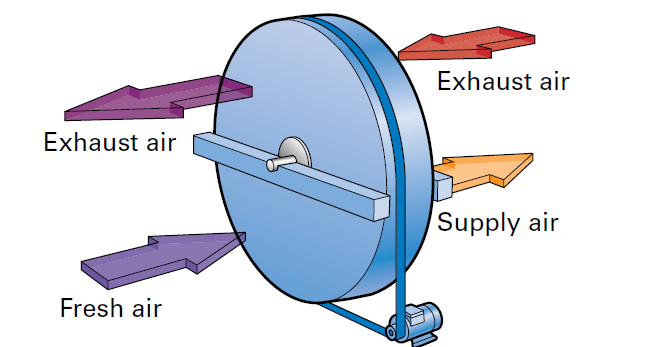On average, 25-35% of the energy delivered to buildings is lost through departing ventilation air streams. Mechanical extract ventilation systems can account for a significant proportion of overall building heat loss, or gain.
Heat Recovery Ventilation Units recover energy from warm exhaust air and transfer it to the incoming fresh air supply, or pre-cool incoming air when the conditioned space is at a lower temperature than the external environment. Selecting ETL qualifying Heat Recovery Ventilation Units in the air handling units of building ventilation systems could help reduce your business’ energy costs.
This could lead to significant reductions in the energy use that would normally be needed to heat or cool air to the temperature required to achieve thermal comfort for the building occupants, or to meet precise conditions for processes.
Heat Recovery Ventilation Units
There are two types of Heat Recovery Ventilation Units listed on the ETL:
- Ventilation Units with plate heat exchangers.
- Ventilation Units with rotating heat exchangers (including thermal and desiccant heat wheels).
Plate Heat Exchangers (Recuperators)
Plate heat exchangers are the most common type of heat exchanger found within residential ventilation heat recovery equipment.
Plate heat exchanger units operate by transferring thermal energy from outgoing to incoming air streams via plate heat exchange surfaces. Two types of plate heat exchangers exist: counter-flow and cross-flow. Cross-flow units are typically simpler in design, cheaper and more common, yet counter-flow offer greater efficiencies.
The construction of the unit ensures that supply and exhaust gas streams are physically separated so that cross-contamination and leakage is minimal. This can be an important consideration in certain applications such as in pharmaceutical clean rooms and hospitals.
Installing a specified energy saving ETL plate heat exchanger at a cost of £1,925 rather than a non-specified product with a cost of £1,750, the estimated potential annual savings are:
- £165
- 1,500 kWh
- 1.5 tonnes CO2e
Important: Plate heat exchangers must now have a dry heat recovery efficiency of greater than or equal to 78% to be listed on the ETL.

Rotating Heat Exchangers
Rotating heat exchangers operate by collecting thermal energy from the outgoing extract air stream and transferring it to the incoming, fresh air stream as the porous wheel slowly rotates into the fresh air path.
Thermal wheels recover sensible heat, which is the heat associated with the change in temperature of the air itself, while desiccant wheels recover both sensible heat and latent heat, which is the energy absorbed or released by a substance changing state at a constant temperature.
The disadvantage of rotating heat exchangers is the greater cross-contamination between exhaust and fresh supply air. In many applications, such as offices, warehouses, retail premises and factory spaces this is not a problem and recirculation of the air is commonplace. However, cross-contamination means that this technology is unsuitable for situations such as hospital operating theatres and food production environments.
Important: rotating heat exchangers must now have a dry heat recovery efficiency of greater than or equal to 78% to be listed on the ETL.
